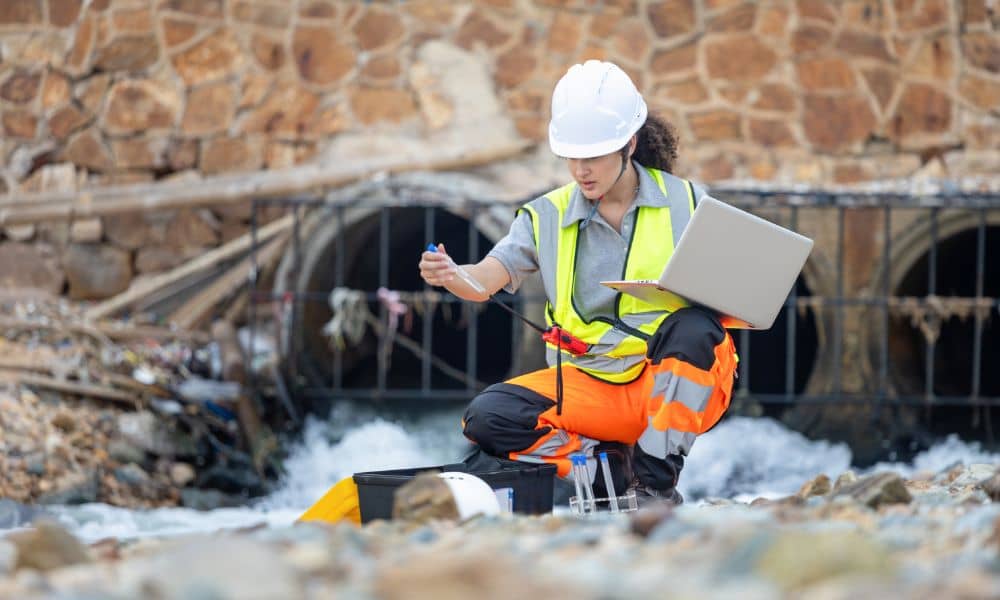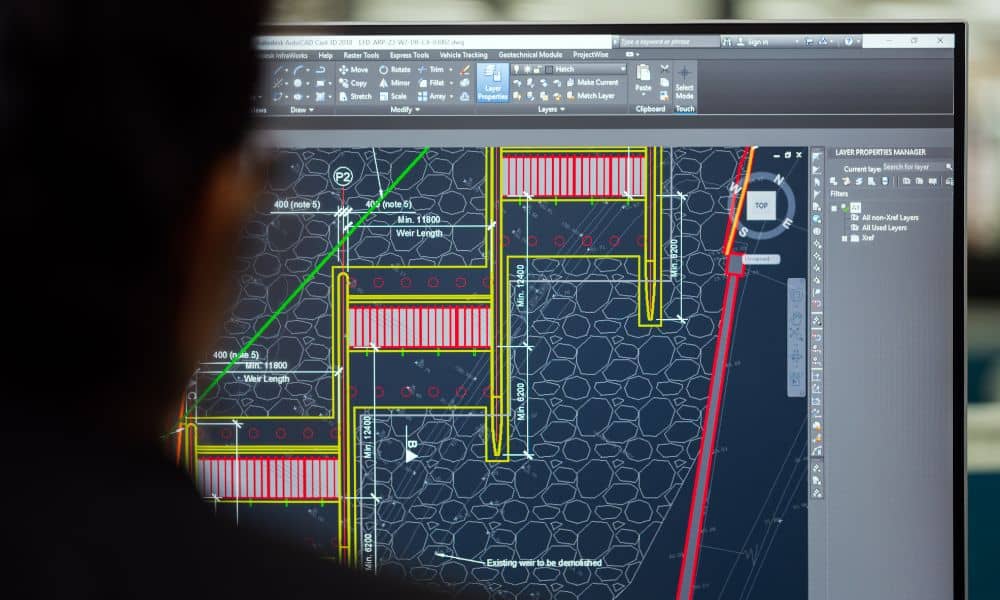
When most people think about construction or development, they imagine buildings going up, roads being paved, or subdivisions taking shape. But what often goes unnoticed—until it becomes a major problem—is stormwater design. Without a proper system in place, water from rain or melting snow can wreak havoc on your property, surrounding infrastructure, and local waterways.
If you’re developing in a water-sensitive region like Michigan, understanding stormwater design isn’t just helpful—it’s critical. This guide explains what stormwater design is, why it matters, and how working with a professional civil engineer can help protect your investment and your community.
What Is Stormwater Design?
Stormwater design refers to the planning, engineering, and implementation of systems that manage how stormwater flows off a site. It’s a crucial part of civil engineering that ensures water is safely collected, conveyed, treated, and released—without causing flooding, erosion, or pollution.
Key Elements of Stormwater Design:
- Runoff Control: Managing the volume and speed of water that flows off rooftops, parking lots, and streets.
- Conveyance Systems: Pipes, ditches, swales, or gutters that move water from point A to B.
- Storage Facilities: Detention or retention ponds that hold water temporarily or permanently.
- Treatment Methods: Green infrastructure like bioswales or rain gardens that filter runoff naturally.
Why Stormwater Design Matters in Michigan
Michigan’s unique geography and climate make stormwater design especially important:
- Seasonal Flooding: Heavy spring rains and snowmelt can saturate soils and flood basements or roads.
- Flat Terrain: Much of Michigan is low-lying, slowing natural drainage and increasing flood risk.
- State Regulations: Michigan’s EGLE (Environment, Great Lakes, and Energy) agency requires stormwater permits and strict adherence to water quality standards.
- Urban Growth: New developments increase impervious surfaces, reducing the land’s natural ability to absorb water.
Whether you’re building in Ann Arbor, Grand Rapids, or Detroit suburbs, poor drainage can shut down projects, erode foundations, or even lead to legal penalties.
How Stormwater Design Impacts Development
Stormwater planning isn’t just about avoiding puddles—it’s a foundational part of site development that affects:
- Site Layout: Where you can place buildings, driveways, and green spaces depends on where the water will go.
- Zoning Compliance: Municipalities require stormwater plans as part of development approvals.
- Long-Term Costs: Effective design reduces future maintenance, repairs, and water damage risks.
A poorly managed site may face erosion, sinkholes, mold, or structural issues—all of which can be avoided with good upfront planning.
Common Stormwater Solutions
Modern stormwater systems can be both effective and sustainable:
1. Detention and Retention Ponds
These hold stormwater temporarily (detention) or permanently (retention) and release it slowly to prevent downstream flooding.
2. Swales and Bioswales
Shallow, vegetated channels that allow water to filter into the ground, reducing pollutants.
3. Permeable Pavement
Specialized surfaces that allow water to seep through, reducing runoff from driveways or sidewalks.
4. Underground Storage Systems
Tanks or vaults that store water below ground in urban or space-limited sites.
5. Rain Gardens and Green Roofs
Landscape elements that absorb and treat runoff naturally.
The Stormwater Design Process

Effective stormwater design requires several key steps, typically performed by a civil engineering team:
1. Site Analysis and Soil Testing
Understanding infiltration capacity and topography helps determine what methods will work best.
2. Hydrology Modeling
Engineers calculate how much water the site will produce during a storm and where it will go.
3. Regulatory Compliance
Designs must meet local stormwater ordinances and obtain proper permits from city or state agencies.
4. Final Engineering Plans
The approved system is then included in construction documents for builders and contractors.
Who Needs Stormwater Design Services?
Stormwater planning isn’t just for large cities. You may need a stormwater plan if you’re:
- Developing a new subdivision or commercial building
- Building on more than 1 acre of land (as required by EGLE)
- Constructing near wetlands, lakes, or protected water resources
- Adding large impervious surfaces (parking lots, paved trails, etc.)
Even schools, churches, and farms often require drainage systems that comply with Michigan law.
Real Example: Michigan Subdivision Development
In southeast Michigan, a developer planned a 20-lot residential subdivision on a flat piece of farmland. Without natural drainage features, the risk of flooding nearby properties was high. A civil engineering firm designed a system of detention basins and underground storage, along with bioswales at key low points. During a record-setting storm the following year, the site held all runoff without flooding adjacent roads or homes—a testament to smart stormwater design.
Working with a Civil Engineer
To ensure your project succeeds, it’s vital to work with a licensed civil engineer experienced in stormwater management. They’ll:
- Perform detailed site evaluations
- Design code-compliant systems
- Help secure permits and approvals
- Ensure the system works long after construction ends
Cost Factors to Consider
Stormwater design costs vary depending on:
- Project size and complexity
- Regulatory environment
- Site grading and soil type
- Type of drainage systems used
Typical design and permitting services may range from $3,000–$20,000+, depending on scope. But good design saves far more in repairs, fines, and retrofits.
Design for the Rain, Not Just the Build
In Michigan, storms, snowmelt, and flat terrain can create major headaches if not addressed up front. That’s why stormwater design is not an afterthought—it’s a core part of responsible construction and land development.
Whether you’re building a new subdivision or updating commercial property, working with a civil engineering professional ensures that your project stays dry, compliant, and protected for years to come.
FAQs
1. Is stormwater design required for residential homes?
If your project disturbs more than one acre or is part of a larger development, yes—it’s required by Michigan EGLE.
2. Can stormwater systems be environmentally friendly?
Yes! Many systems use green infrastructure like rain gardens or bioswales.
3. What’s the difference between detention and retention ponds?
Detention ponds temporarily hold water; retention ponds store it permanently.
4. How long does stormwater design take?
Design and permitting can take 4–12 weeks depending on project size and agency review time.
5. Can poor stormwater design delay a construction project?
Absolutely. Projects may fail inspections or be halted due to non-compliance.
6. Who approves stormwater plans in Michigan?
Local municipalities and Michigan EGLE (formerly DEQ) oversee and approve stormwater designs.